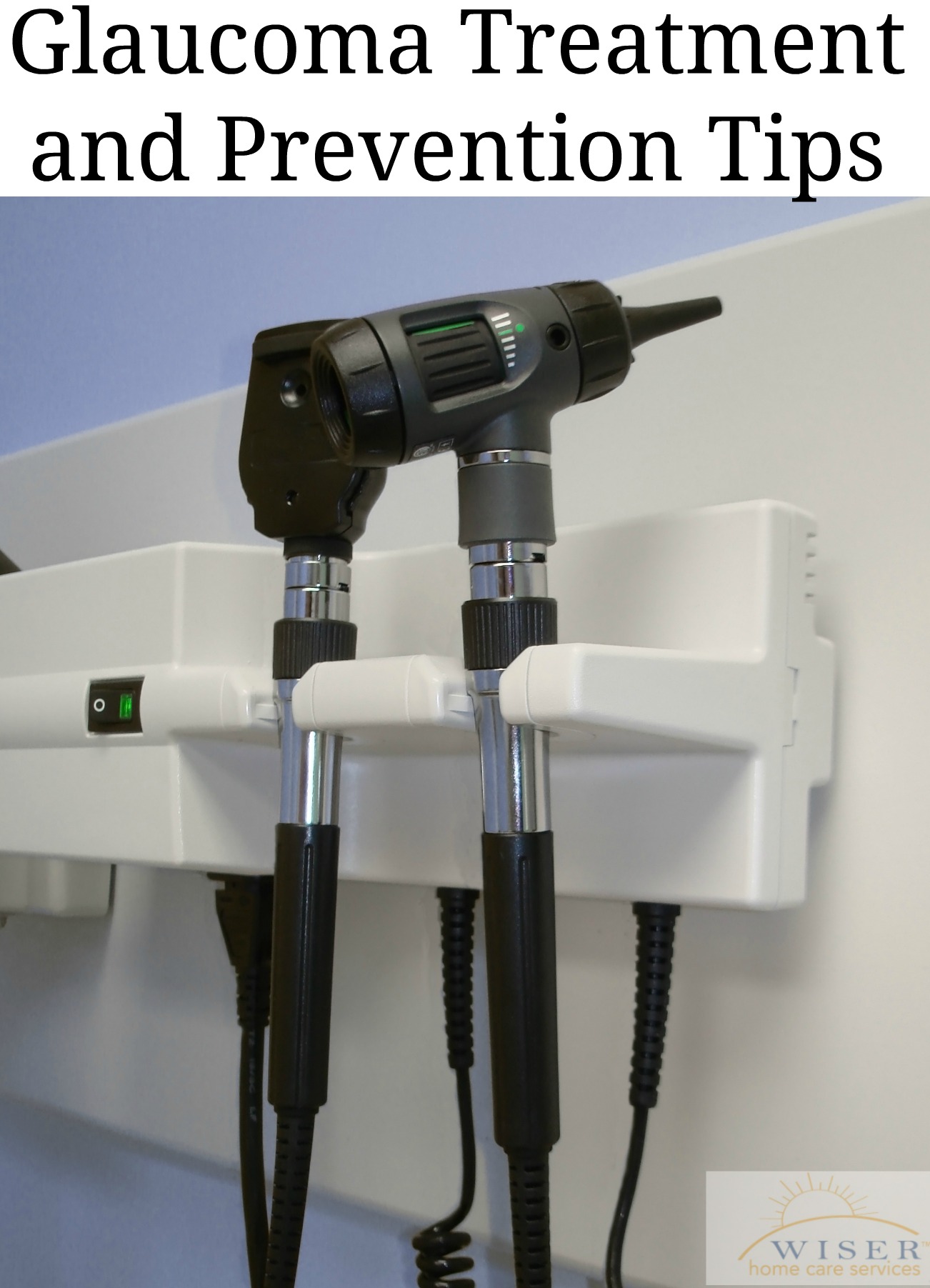We have blogged a lot lately about senior eye health and the prevalence of eye diseases amongst the elderly. As caregivers we help a lot of patients who suffer from vision loss due to eye disease, and a majority of them regret not catching it sooner.
Our goal here at Wiser Home Care Services is to not only help seniors in need, but raise awareness of age-related illnesses so that we can help seniors prevent these diseases.
As we mentioned in the first blog of our series, there are four common eye diseases that affect older Americans. These eye diseases include: age-related macular degeneration, cataracts, diabetic retinopathy and glaucoma. This week, as we wrap up our mini-series, we will cover the topic of the leading cause of irreversible blindness worldwide: glaucoma.
What is Glaucoma?
As defined by the Bright Focus Foundation, Glaucoma is a “group of eye disorders that have few symptoms in their early stages but eventually lead to damage of the optic nerve, which can lead to vision loss or complete blindness.”
Glaucoma comes in two main forms: open angle and angle closure. The most common, affecting nearly 95% of individuals, is open-angle. This type of Glaucoma has no symptoms and over time will affect peripheral vision, ultimately leading to complete blindness.
The less common form, angle closure, also comes in two forms: acute and chronic. Acute angle closure takes place when “the normal flow of aqueous humor between the iris and the lens is suddenly blocked.” Chronic angle closure is similar to open angle glaucoma in the sense that it happens slowly without any symptoms and leads to vision loss.
Give Me the Numbers
Currently, there are approximately 3 million Americans who suffer from glaucoma with 90% of these people over the age of 40. Expanding globally, experts predict that due to the world’s aging population, by the year 2020 almost 80 million people will be suffering from glaucoma.
According to brightfocus.org, the disease costs the US economy over $2.86 Billion each year in direct costs and productivity losses.
Am I at Risk?
From infants to seniors, everyone is at risk of suffering from Glaucoma. However, our elderly loved ones are at a higher risk than everyone else. Furthermore, African Americans are 15 times more likely to suffer from blindness caused by Glaucoma than any other race.
What Can I Do to Prevent My Chances of Glaucoma?
The most important thing you and your elderly loved one should do is have regular eye exams. Like any disease, the earlier Glaucoma is detected, the better the outcome for the sufferer will be. In addition, a thorough understanding of potential risk factors will go a long way in helping stave off the effects of Glaucoma. Potential risk factors include:
- High eye pressure
- Family history
- Age and Race
- Thin corneas
- Severe near-sightedness
- High blood pressure
- High use of corticosteroids
I have Glaucoma, what are my options?
Unfortunately, there is currently no cure for Glaucoma. With that being said, there are several treatment options available to help lower the effects of the disease. For Glaucoma in the early stages, eye doctors generally recommend a treatment of eye drops and sometimes pills.
If the Glaucoma worsens, then your doctor will may suggest incisional or laser surgery. However, these surgeries are usually only for younger Glaucoma patients.
If you care for an elderly loved one who suffers from Glaucoma and would like help caring for or developing an extensive care plan, we can help. We will be happy to answer any questions you may have.

